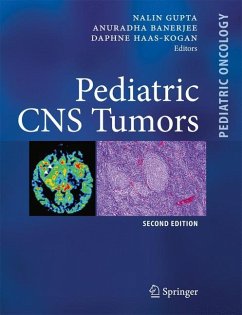
Tumors of the Brain and Spine

PAYBACK Punkte
34 °P sammeln!
It is frequently stated that progress in the management of tumors of the brain and spine has not occurred in the past 25 years. Such statements seriously underestimate and misrepresent progress in managing various central nervous system tumors, the tremendous technologic enhancements that have revolutionized the imaging of the tumors and the host organ, the multitude of surgical adjuncts such as computerized imaging guidance and functional mapping of the brain and its tracts that are routinely used in the modern neurosurgical operating room, and the highly conformal delivery of radiation to th...
It is frequently stated that progress in the management of tumors of the brain and spine has not occurred in the past 25 years. Such statements seriously underestimate and misrepresent progress in managing various central nervous system tumors, the tremendous technologic enhancements that have revolutionized the imaging of the tumors and the host organ, the multitude of surgical adjuncts such as computerized imaging guidance and functional mapping of the brain and its tracts that are routinely used in the modern neurosurgical operating room, and the highly conformal delivery of radiation to the tumor mass with remarkable sparing of the surrounding nervous tissue. Underlying these technologic improvements are the changes in philosophy that have resulted in a true multidisciplinary approach. Equally significant is the molecular revolution that is identifying key markers behind the genesis of brain tumors, their proliferation, and their resistance to therapy. These molecular discoveries have ushered in the era of molecular targeted therapy, as first demonstrated by the extraordinary success story in chronic myelogenous leukemia of imatinib (Gleevec). The rational combination of targeted agents will revolutionize the way che- therapy is given, either alone or in conjunction with radiotherapy. Lastly, focused attention to patients' well-being has emphasized all measures of quality of life, has encouraged greater participation by patients and their caregivers in the decision-making process, and has encouraged the development of a variety of quality-of-life measurement tools to ensure that adverse effects of treatment are recognized and addressed.














